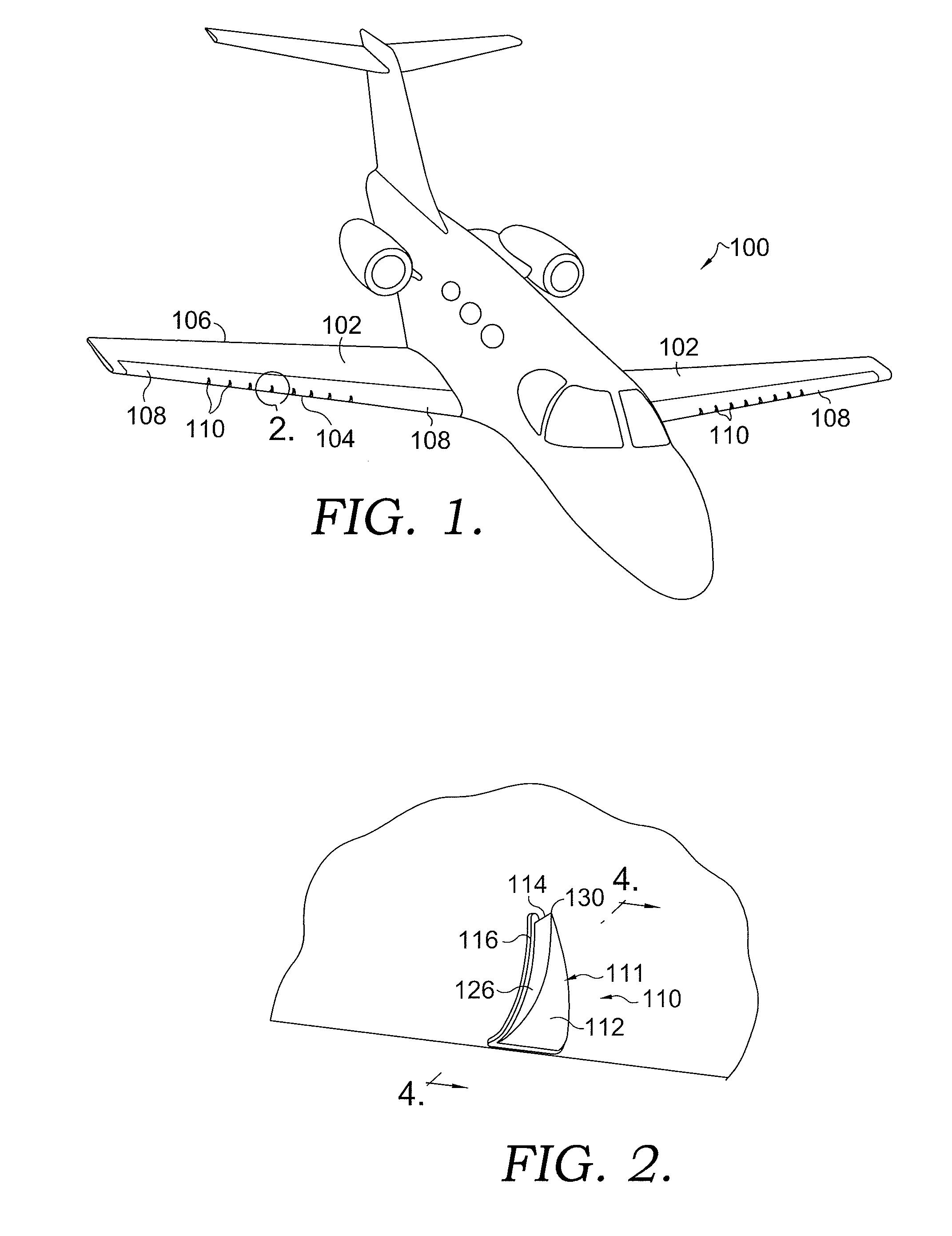Wing leading edge having vortex generators
- Summary
- Abstract
- Description
- Claims
- Application Information
AI Technical Summary
Benefits of technology
Problems solved by technology
Method used
Image
Examples
Embodiment Construction
[0021]An embodiment for an aircraft 100 is shown in FIGS. 1-5. As can be seen from the figure, aircraft 100 includes first and second wings 102. One will understand that the configuration of each is the flip-side equivalent of the other. Each wing has a leading edge 104 and a trailing edge 106. With respect to each, the leading edge 104 includes an deice boot 108.
[0022]One skilled in the art will recognize that devices like boot 108 typically are constructed of a flexible material which is capable of being elastically expanded out, and then contracted back while maintaining structural integrity. In one embodiment, this boot is constructed of neoprene rubber, which is a well-known synthetic material which is abrasion-resistant, chemical-resistant, waterproof, and elastic. It is, of course, possible that boot 108 could be constructed of other materials.
[0023]Functionally speaking, boot 108 is expanded using a plurality of spanwise extending inflatable tubes which are stitched into the...
PUM
 Login to View More
Login to View More Abstract
Description
Claims
Application Information
 Login to View More
Login to View More - R&D
- Intellectual Property
- Life Sciences
- Materials
- Tech Scout
- Unparalleled Data Quality
- Higher Quality Content
- 60% Fewer Hallucinations
Browse by: Latest US Patents, China's latest patents, Technical Efficacy Thesaurus, Application Domain, Technology Topic, Popular Technical Reports.
© 2025 PatSnap. All rights reserved.Legal|Privacy policy|Modern Slavery Act Transparency Statement|Sitemap|About US| Contact US: help@patsnap.com



